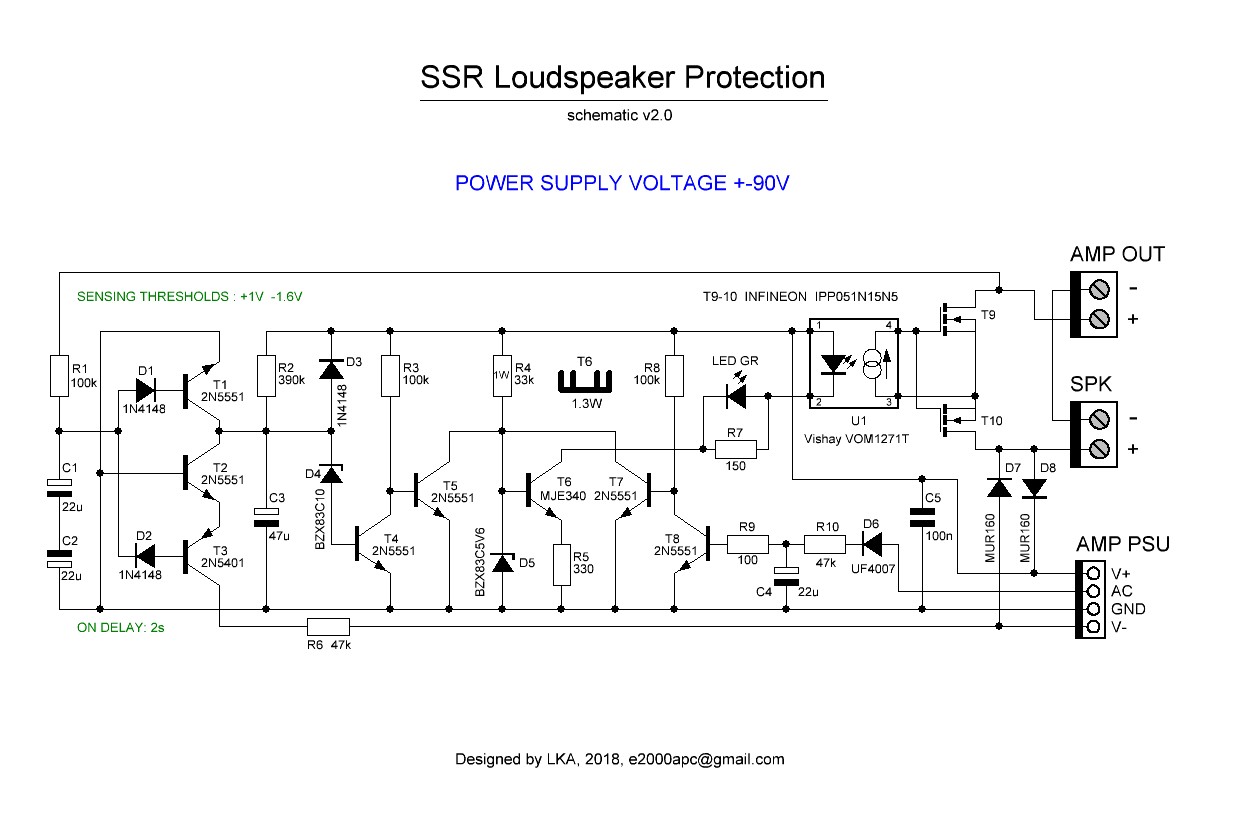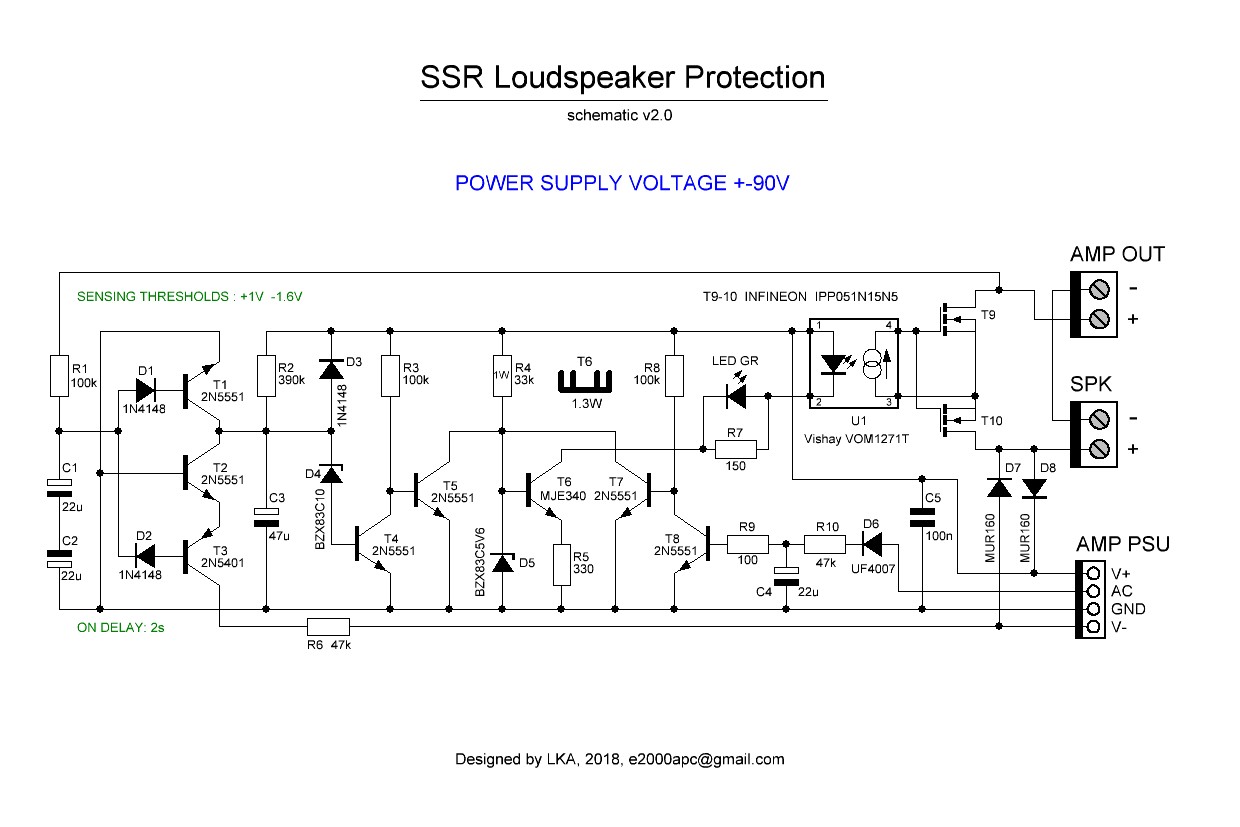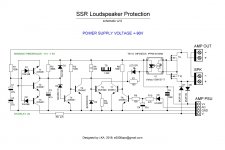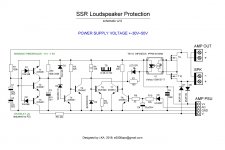This project is interesting but hard to follow: could someone please post the actual schematics debated here? Thanks.
Jacques
Jacques
The solid state relay is only part of the picture. Post #22 here show the relay made from two FET's and a photovoltaic coupler.
Output Relays
How you drive/interface the coupler is dependent on the protection circuit you are fitting the relays to.
Output Relays
How you drive/interface the coupler is dependent on the protection circuit you are fitting the relays to.
Thanks LKA I get it now.
In which way is the discrete version better that the uPC1237 one you posted on #9 ?
I have used this chip in the past (with conventional relays) and still have several in stock.
In which way is the discrete version better that the uPC1237 one you posted on #9 ?
I have used this chip in the past (with conventional relays) and still have several in stock.
Thanks LKA I get it now.
In which way is the discrete version better that the uPC1237 one you posted on #9 ?
I have used this chip in the past (with conventional relays) and still have several in stock.
- hard to get genuine
- max 60V Vcc
- power on delay circuit -R7,C7(see DS)- increases the switch ON rise time ( I measured "ebay version" )
One can use protection like this. On the left - DC detector, on the right - AC detector. Photovoltaic coupler is powered by CCS. R2,C3 - ON delay. T6 requires a heatsink.
View attachment 715137
Values of parts please 🙂
Can you post the pcb for home etching?
I'm strongly interested😎
Last edited:
I do not sell pcb because I have never implemented it as separate board.
A working example you can see here (integrated part of an amp).
Component values are valid for +-40VDC PSU.
K51 - 120W/4R CFA POWER AMPLIFIER - Google Photos
Attached schematic is for +-90VDC.
Thimios, what is your PSU voltage ?

A working example you can see here (integrated part of an amp).
Component values are valid for +-40VDC PSU.
K51 - 120W/4R CFA POWER AMPLIFIER - Google Photos
Attached schematic is for +-90VDC.
Thimios, what is your PSU voltage ?
Attachments
I do not sell pcb because I have never implemented it as separate board.
A working example you can see here (integrated part of an amp).
Component values are valid for +-40VDC PSU.
K51 - 120W/4R CFA POWER AMPLIFIER - Google Photos
Attached schematic is for +-90VDC.
Thimios, what is your PSU voltage ?

Hi dear LKA,i have some amplifiers using +/-50v and some other using +/-35v or +/-42v.
As you haven't pcb for sale,please post the gerbers or whatever file you have for.🙂
P.S just now i see the k51 using +/-40v.
Last edited:
Thanks LKA...
I guess this circuit could be driven by ANY independent pwr supply right ?
As long as speaker connections are done, it would be fine.
The reason I am asking is, I have an amp that runs on +/- 85 volts (about 500w rms/8 ohms per channel). I was thinking of having a small independent supply just to drive this circuit.
I guess this circuit could be driven by ANY independent pwr supply right ?
As long as speaker connections are done, it would be fine.
The reason I am asking is, I have an amp that runs on +/- 85 volts (about 500w rms/8 ohms per channel). I was thinking of having a small independent supply just to drive this circuit.
In case of failure it turns off mains triac and shorts supply of amp via triac with a few ohms series resistor. Fast enough to protect speaker.
This sounds like a much better plan than passing the output through extra devices. Willing to share a circuit?
I do not sell pcb because I have never implemented it as separate board.
A working example you can see here (integrated part of an amp).
Component values are valid for +-40VDC PSU.
K51 - 120W/4R CFA POWER AMPLIFIER - Google Photos
Attached schematic is for +-90VDC.
Thimios, what is your PSU voltage ?
LKA,
the amp looks great. Did you designed it?
SSR's made using two power FET's and a floating photovoltaic coupler are the way to go and many have used these successfully. I would never go back to mechanical relays now.
SSR's seem to be an expensive way of doing the job.
RS do quite a few but they are tens of pounds.
I can get a cheap relay for a few pounds.
I have a little box with a relay based speaker protector and cant tell the difference in sound with or without it.
Last edited:
The problem with a relay is that a standard one can NOT break DC without arcing even for a few amps DC current. So, if there is ever a fault condition in your amp that puts DC across your speaker, the relay may not be fast enuf to protect your speaker from instant destruction. Even if it can, the relay itself will most likely be destroyed, contacts melted. We are talking protection circuits for amps ranging from 200 to 600watts rms power meaning the dc supply will be in the 80 - 100 volts region PER RAIL.
And remember the whole point of doing this is:
- Most importantly to protect your expensive speakers against dc offset faults.
- To avoid thumps when the amp is powered on or off
And remember the whole point of doing this is:
- Most importantly to protect your expensive speakers against dc offset faults.
- To avoid thumps when the amp is powered on or off
There are lots of snubbers around but I doubt they work when 20 - 30 Amps of DC is flowing across the contacts.
This amp I have has +/- 95 volts per rail. An 8 ohm speaker will have probably about 1 ohm max non inductive pure resistance AT MOST. That would force about 90 or so amps thru it in a DC fault.
I doubt any snubber can quench that.
There are SOME very specialized relays (under pressurized nitrogen inside) which may be able to break DC but those are $300+ or so.
So, SSR is a bit more expensive and will definitely survive a DC short.
A crowbar is also available anyway which will blow the fuse as a secondary precaution.
Happy holidays
This amp I have has +/- 95 volts per rail. An 8 ohm speaker will have probably about 1 ohm max non inductive pure resistance AT MOST. That would force about 90 or so amps thru it in a DC fault.
I doubt any snubber can quench that.
There are SOME very specialized relays (under pressurized nitrogen inside) which may be able to break DC but those are $300+ or so.
So, SSR is a bit more expensive and will definitely survive a DC short.
A crowbar is also available anyway which will blow the fuse as a secondary precaution.
Happy holidays
- Home
- Amplifiers
- Solid State
- SSR for speaker protection?


